A car for all occasions: introducing the Audi RS3

Trying to get a handle on the Audi personality is increasingly tricky. After three decades of coasting along under the auspices of ‘Vorsprung Durch Technik’, the rest of the auto industry eventually caught up with Audi’s technocratic idealism. What’s rather more secure is the company’s lead in terms of perceived quality and sophistication. Audi is still the industry leader when it comes to interiors, navigation and dashboards, with rigorous attention to detail.
As we've often noted, there’s an Audi for every occasion, big or small, sporty or practical. The latest in what promises to be another deluge of new models (eight in two years) is the RS3, a high performance variant of the A3 available in both sedan (saloon) and Sportback versions. ‘RS’ is Audi’s magic performance glitter, a dedicated division that has been building limited run high-speed versions of its regular production models since the 1990s.
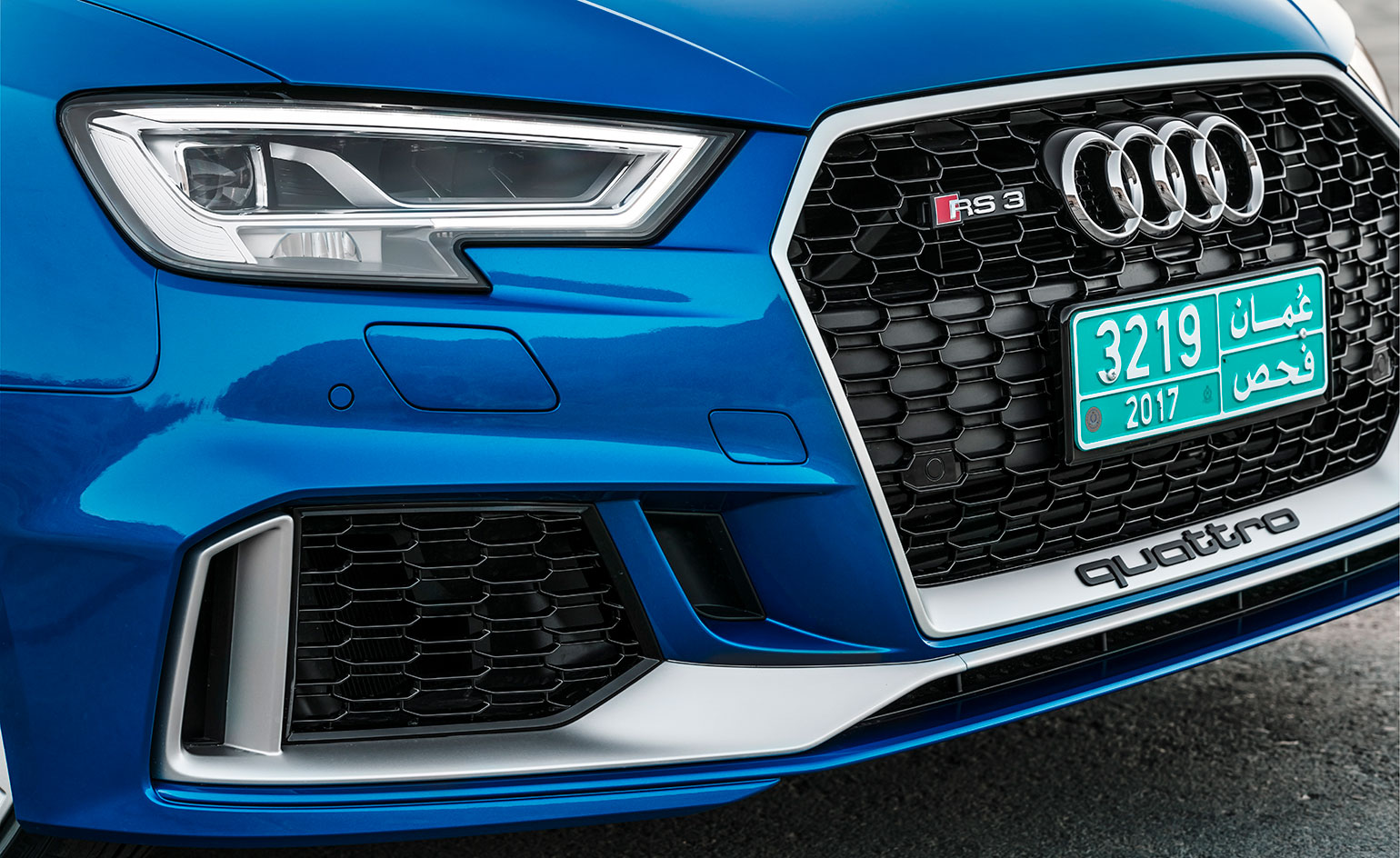
The RS3 features a singleframe grille in gloss black honeycomb and a striking RS bumper
The RS3 is notable chiefly because this is the first time the magic dust has been dappled on a compact saloon car – as opposed to something larger, sleeker or more capacious. The move shows how important traditional saloon car markets still are to Audi (the US, China, India, etc.); even as markets like Europe switch to SUVs big and small, a sports car still has a halo effect across a range.
Audi chose to launch the RS3 in Oman, away from the European circuit and not far from those key target markets. The car might be a canny bit of marketing, but there’s no denying its ability. A landscape of wide, fast, empty roads – goats, camels and cattle notwithstanding – Oman offers the kind of fantasy world that best suits the modern performance machine. We can report that the RS3 – in both variants – is both competent and comfortable, with the quattro four wheel drive and numerous other stability aids endowing deity-like control over the car. Way up in the country's sparsely-inhabited Dhofar mountains exists a veritable paradise for drivers, with the kind of wide, empty, far-sighted roads that usually exist only in car ads and on press launches.
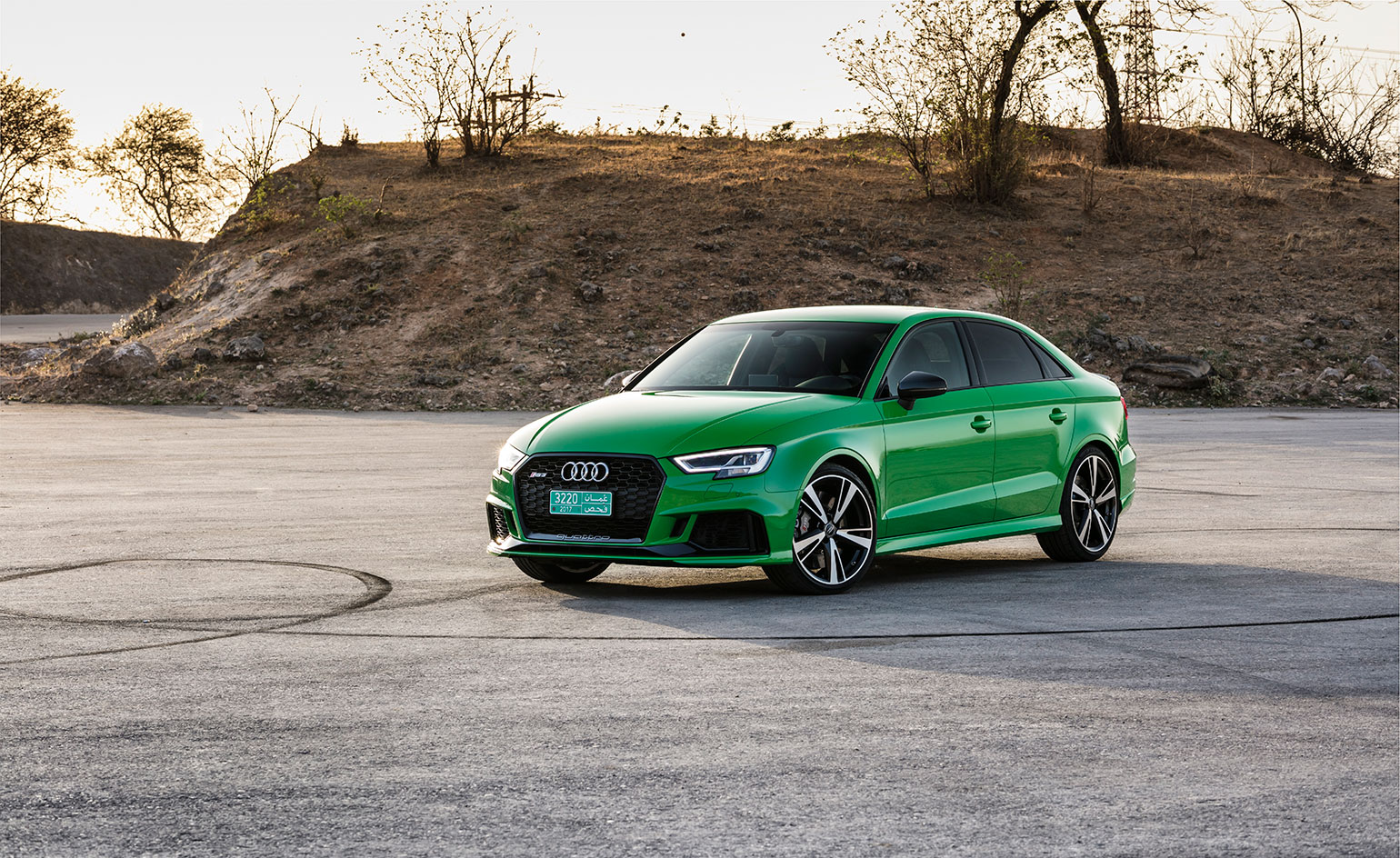
The car features a five-cylinder engine, S tronic and quattro permanent all-wheel drive that switches gears at lightning speed
Herein lies the paradox at the heart of the traditional performance car. You simply can’t use it to its full abilities anywhere. With a ‘supercar’, the trade-off for this inability to deploy all the bells and whistles is the sheer visual and sonic drama of ownership and display. The RS3, on the other hand, is a pumped-up compact car, albeit one from a premium brand. It’s designed as a gateway purchase to more (and more profitable) performance (although you can of course specify some very expensive options, like carbon ceramic brakes). The car is even explicitly described as the ‘entry ticket to Audi Sport’ by CEO Stephan Winkelmann, who also notes the RS3 will probably be the sub-brand’s biggest seller.
That being said, Audi Sport models make up less than two per cent of Audi’s total sales; they exist almost purely to garnish the brand. Yet the main course is changing. In Europe, the SUV is the only sector that continues to expand, year in, year out. At the same time, the electric car market seems forever poised for massive expansion. By the end of 2018 Audi will have joined BMW in having its own dedicated electric car sub-division, dubbed e-tron. The role of Audi Sport in enhancing our enjoyment or ownership of these all-electric machines remains to be seen. For all its ability on the road, the RS3’s most important job is to steer Audi Sport towards commercial relevance.
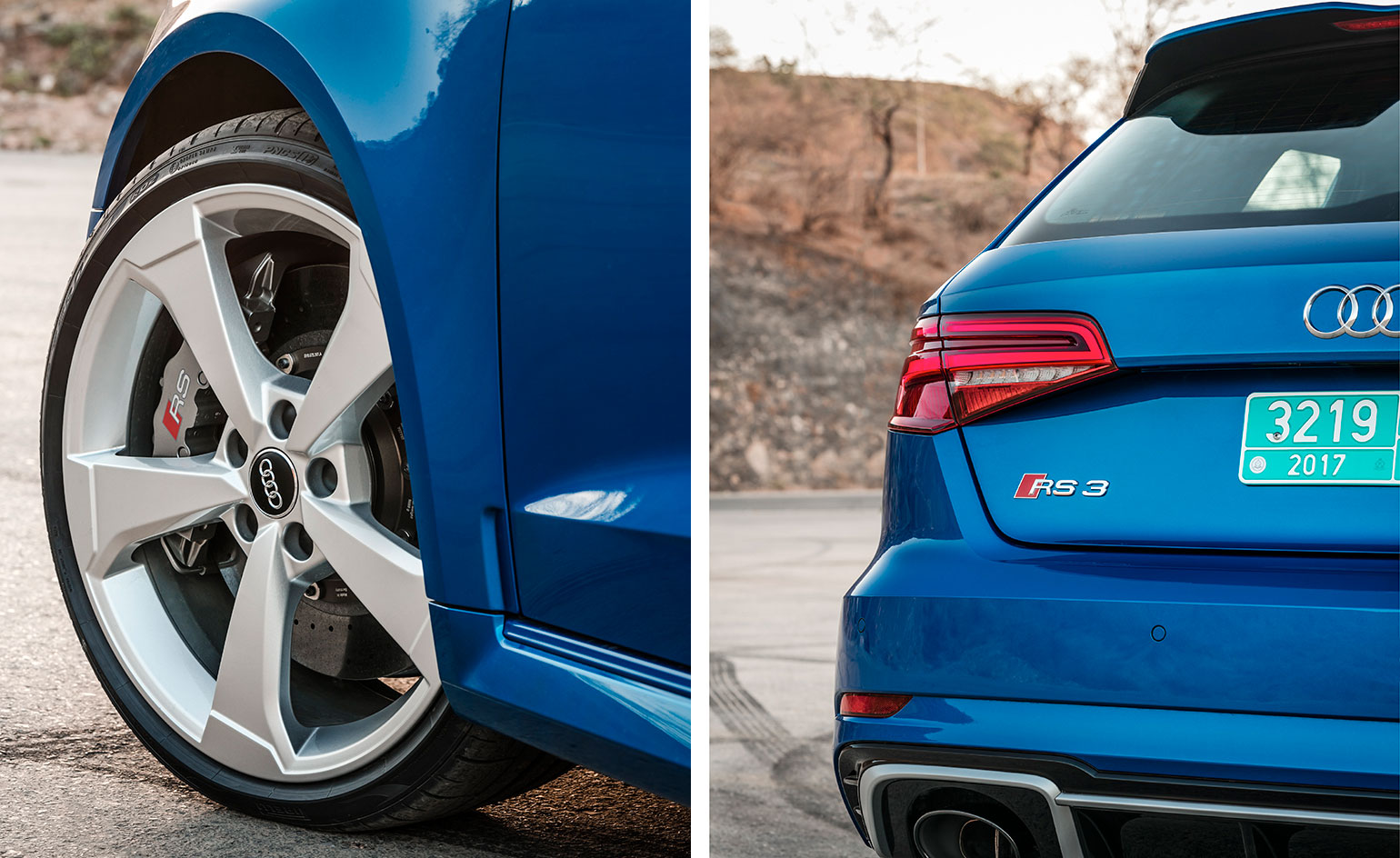
The model features accentuated wings and 19-inch wheels with a five-arm-blade design

It’s capable of a top speed of 174 mph
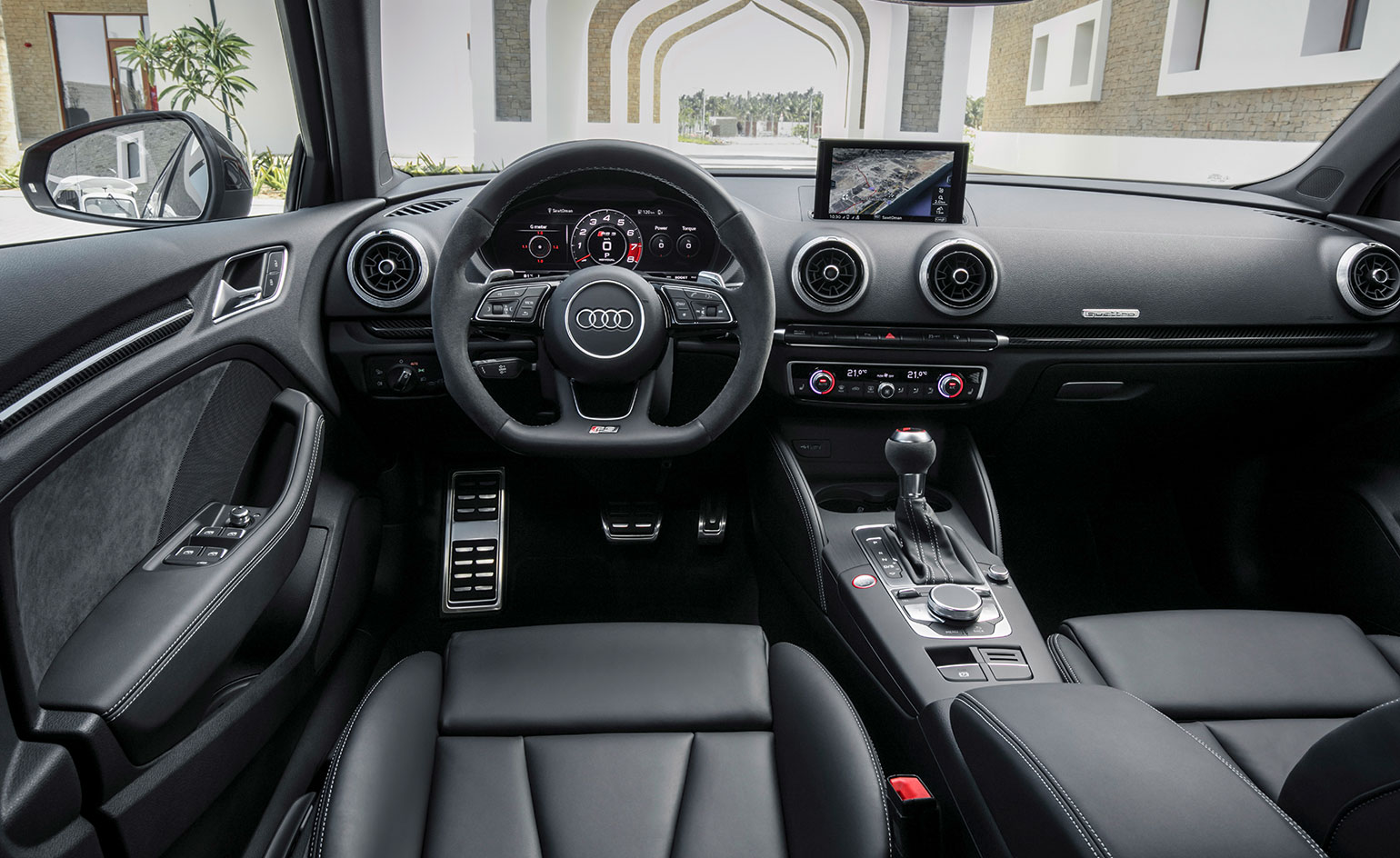
The fully-digital interior display features a central rev counter and sporty secondary display of values such as engine data, g-meter or tyre pressure/temperature
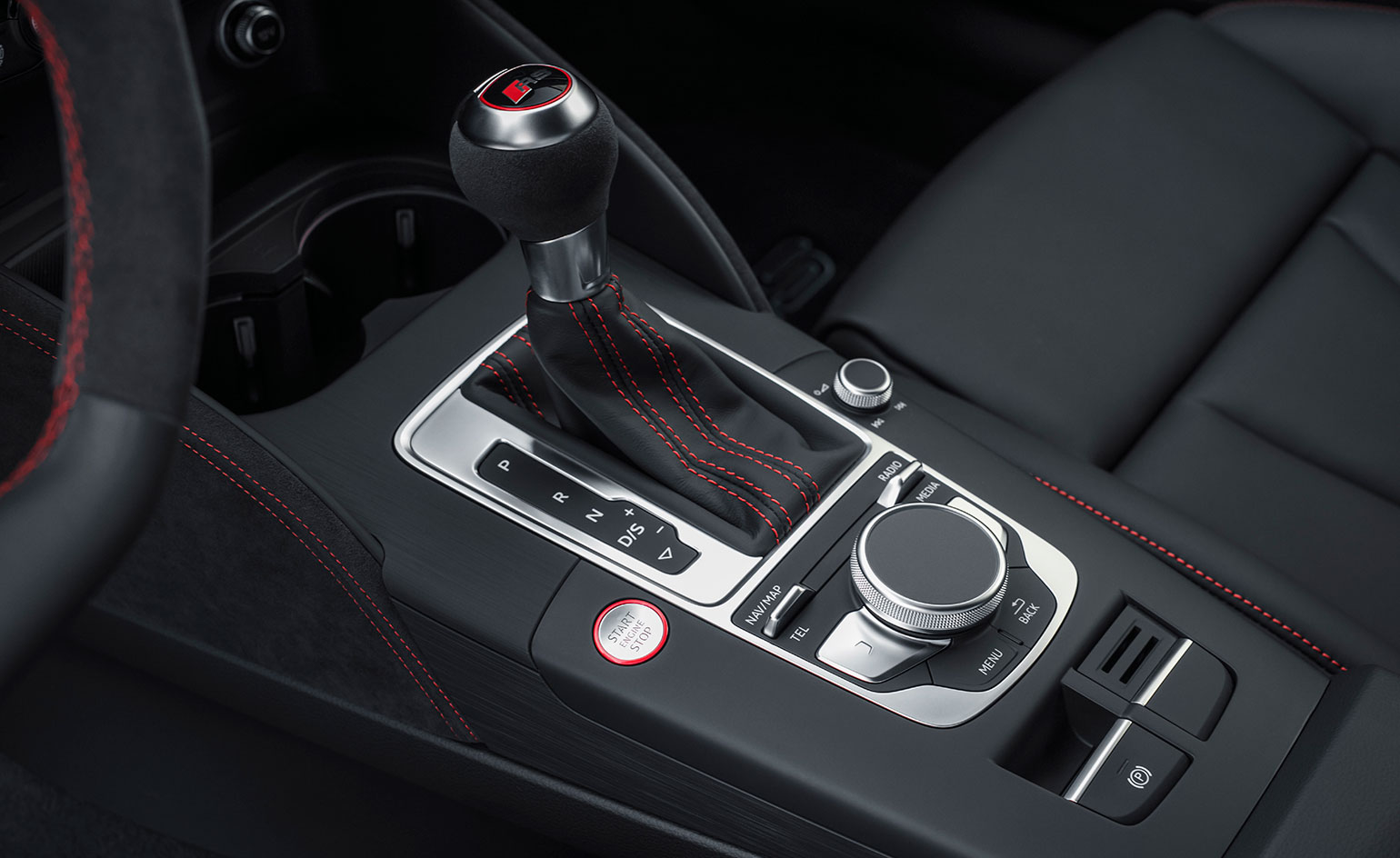
The car is described as the ‘entry ticket to Audi Sport’ by CEO Stephan Winkelmann
INFORMATION
Audi RS3, from £47,000. For more information, visit the Audi website
Receive our daily digest of inspiration, escapism and design stories from around the world direct to your inbox.
Jonathan Bell has written for Wallpaper* magazine since 1999, covering everything from architecture and transport design to books, tech and graphic design. He is now the magazine’s Transport and Technology Editor. Jonathan has written and edited 15 books, including Concept Car Design, 21st Century House, and The New Modern House. He is also the host of Wallpaper’s first podcast.
-
 Year in review: the shape of mobility to come in our list of the top 10 concept cars of 2025
Year in review: the shape of mobility to come in our list of the top 10 concept cars of 2025Concept cars remain hugely popular ways to stoke interest in innovation and future forms. Here are our ten best conceptual visions from 2025
-
 These Guadalajara architects mix modernism with traditional local materials and craft
These Guadalajara architects mix modernism with traditional local materials and craftGuadalajara architects Laura Barba and Luis Aurelio of Barbapiña Arquitectos design drawing on the past to imagine the future
-
 Robert Therrien's largest-ever museum show in Los Angeles is enduringly appealing
Robert Therrien's largest-ever museum show in Los Angeles is enduringly appealing'This is a Story' at The Broad unites 120 of Robert Therrien's sculptures, paintings and works on paper
-
 A tale of two Audis: the A5 saloon goes up against the A6 Avant e-tron
A tale of two Audis: the A5 saloon goes up against the A6 Avant e-tronIs the sun setting on Audi’s ICE era, or does the company’s e-tron technology still need to improve?
-
 McLaren Special Operations deals itself a winner with the Las Vegas-inspired Project Viva
McLaren Special Operations deals itself a winner with the Las Vegas-inspired Project VivaWe delve into the world of McLaren Special Operations, discover what the deal is with Project Viva, spec our own hypercar and explore the role of the Pure McLaren experience
-
 Around London in sybaritic silence with the majestic all-electric Lunaz Phantom V
Around London in sybaritic silence with the majestic all-electric Lunaz Phantom VClassic electrifier Lunaz has turned its skilled hands to the Rolls-Royce Phantom V. We sample the ultimate in zero-emission luxury on the streets of London
-
 The Audi Concept C strives for clarity, drawing on the past to present a new face for the future
The Audi Concept C strives for clarity, drawing on the past to present a new face for the futureLaunched this month in Milan, the Audi Concept C is a reboot of both design language and visual identity for the German manufacturer
-
 How will future car interiors take shape? London studio NewTerritory has a vision for automotive design
How will future car interiors take shape? London studio NewTerritory has a vision for automotive designDesign studio NewTerritory has set up a new automotive division to explore the future of car interiors. We interrogate the team
-
 How design defined Audi: the brand celebrates 60 years with a collection of its greatest hits
How design defined Audi: the brand celebrates 60 years with a collection of its greatest hitsA fleet of iconic Audis, the flowing lines of Frank Gehry’s architecture and the open roads of Northern Spain made for a design-rich experience
-
 All the best bits from Goodwood Festival of Speed 2025
All the best bits from Goodwood Festival of Speed 2025As car makers switch their allegiance to the sunny West Sussex countryside as a place to showcase their wares, a new generation of sports cars were sent running up that famous hill
-
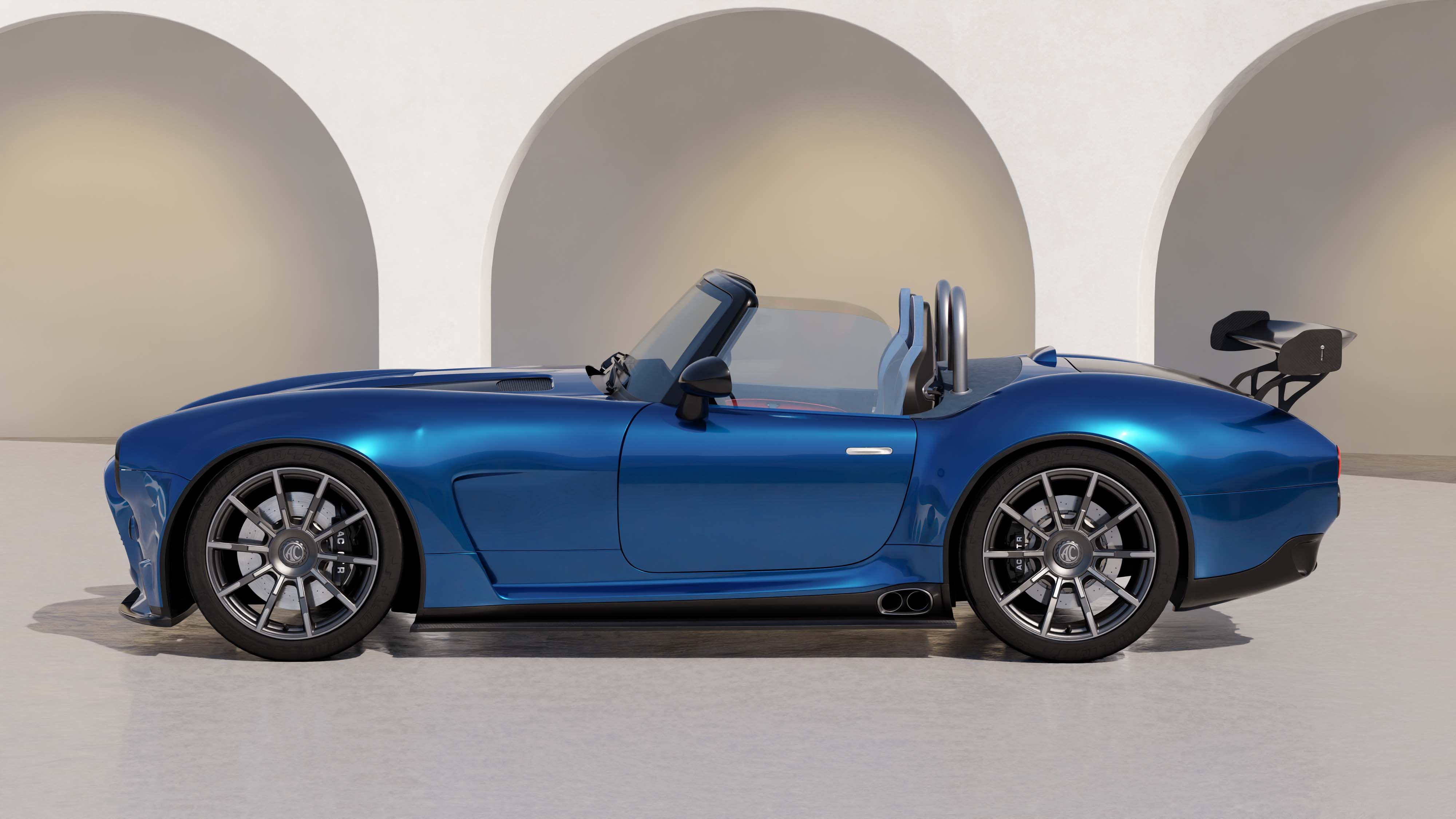 Venerable British car-maker AC goes OTT with the high-output, low-slung AC GT SuperSport
Venerable British car-maker AC goes OTT with the high-output, low-slung AC GT SuperSportPitched at all-American fans of the original AC Cobra, the GT SuperSport is a fearsome two-seat roadster with more muscle than ever before